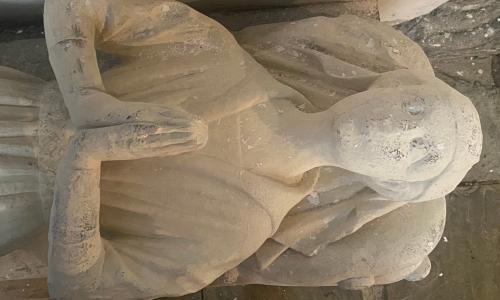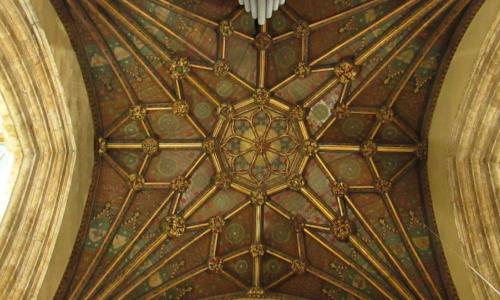Early Life
Joseph Milner was born in Leeds in 1744 and attended Leeds Grammar School, later going on to St Catharine's College Cambridge. On graduation, he went to Thorpe Arch, near Wetherby, to be an assistant in a school being run by Christopher Atkinson, the vicar of the parish. It was here that Milner received holy orders, and became Atkinson's curate. Still in deacon's orders, Milner left Thorp Arch to become headmaster of Hull Grammar School in 1768 where he was to stay for thirty years.
Holy Trinity, Hull - an evangelical approach
Whilst in Hull he was also elected afternoon lecturer at Holy Trinity Church, now Hull Minster. This enabled him to pay for the education of his brother Isaac Milner, who himself had an illustrious life being a close friend of William Wilberforce.
In 1770, Joseph became a follower of the rising Evangelical school and was suspected of being a supporter of the Methodist movement. The nature of his congregation at Holy Trinity then changed. Evangelists looked to personal salvation in this life and not the next.
This kind of faith ignited the anti-slavery movement in Britain and the United States, and then a whole chain of reform movements thereafter, all conducted in the spirit of a mission: temperance and prohibition, anti-gambling, women’s rights, civil rights and peace movements.
There is no doubt at all that Milner influenced William Wilberforce and his movement to abolish slavery.
His evangelical approach appealed to the poor. Afternoon lectures were fully attended but he was snubbed by many of the local wealthy merchants.
Milner also had responsibility for the church at North Ferriby and became well known in the village which sits just west of Hull.
Later Life
In 1792 he had a severe attack of fever and became quite ill for some time.
In 1797 the Mayor and Corporation offered him the vicarage of Holy Trinity, mainly through the efforts of William Wilberforce. Hull had become increasingly aligned to the Evangelical movement. He took up his post but unfortunately, Milner fell ill and died on 15 November 1797. He was the shortest serving Minister of this church.
He was buried in Holy Trinity Church, and this is a monument to his memory.
A very avid writer on Christian matters, Milner's major work was the History of the Church of Christ (London, 1794–1809). He lived to complete the first three volumes, and two more were added by his brother Isaac.
This became a controversial piece of work and created much discussion amongst clergy.
Milner's monument
The monument was sculpted by the illustrious John Bacon (Junior). He was one the leading sculptors of his generation, his works being highly prized and sought. This monument would have been a very expensive piece of art.
We must look at the wording of the monument to gauge how it came to be purchased and placed in the Minster.
“This Monument is erected by the grateful affection of his scholars” - could any of them have paid for the monument?
Milner “schooled” some very famous people indeed. It is likely that among those who attended the Hull Grammar School in his 30 years and likely contributed to the monument’s cost were:
- William Wilberforce abolitionist and Member of Parliament.
- William Mason the poet, once offered Poet Laureate status by William Pitt the Younger.
- Richard Johnson the first Christian Vicar of Australia,
- Peter William Watson a botanist and artist who founded Hulls Botanical gardens.
- Thomas Peronnet Thompson who became Governor of Sierra Leone.
- William Dealtry Chancellor of the diocese of Winchester.
- George Pryme Member of Parliament for Cambridge.
Although the design for Milner's monument implies that a ledger (a stone in the floor) was placed where he was buried, we cannot find it. It was either never made, or has been built over or moved. It could have been moved to make way for the raised quire in the Chancel in the late 1880s.
The wording on the design by Bacon implies a Bible Verse which can be identified as
Phillipians Ch1 : V21 "For to me, to live is Christ and to die is gain"
In other words - I live my life in Christ but dying is even better.
About John Bacon
Bacon was the second son of the sculptor John Bacon and his wife Elizabeth Wade.
Born in the City of Westminster, he entered the Royal Academy at the age of twelve, one of the youngest pupils ever admitted. At fifteen, Bacon exhibited his first work; at sixteen, he was awarded the silver medal of the Royal Academy and in 1797 he won the gold medal for his statue of the Trojan goddess Cassandra. His father died in 1799, and the younger John Bacon succeeded to his business.
There are six of Bacon's monuments in St Paul’s Cathedral and at least eight in Westminster Abbey. There are also two in Windsor Castle.




